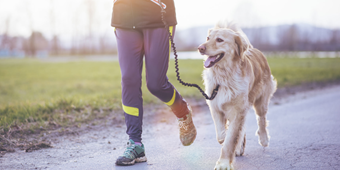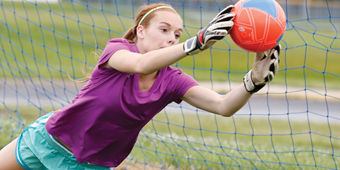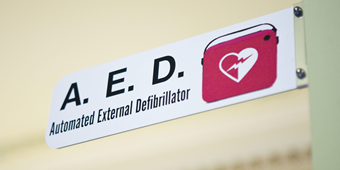When Are Post-Workout Aches More Than a Pain?
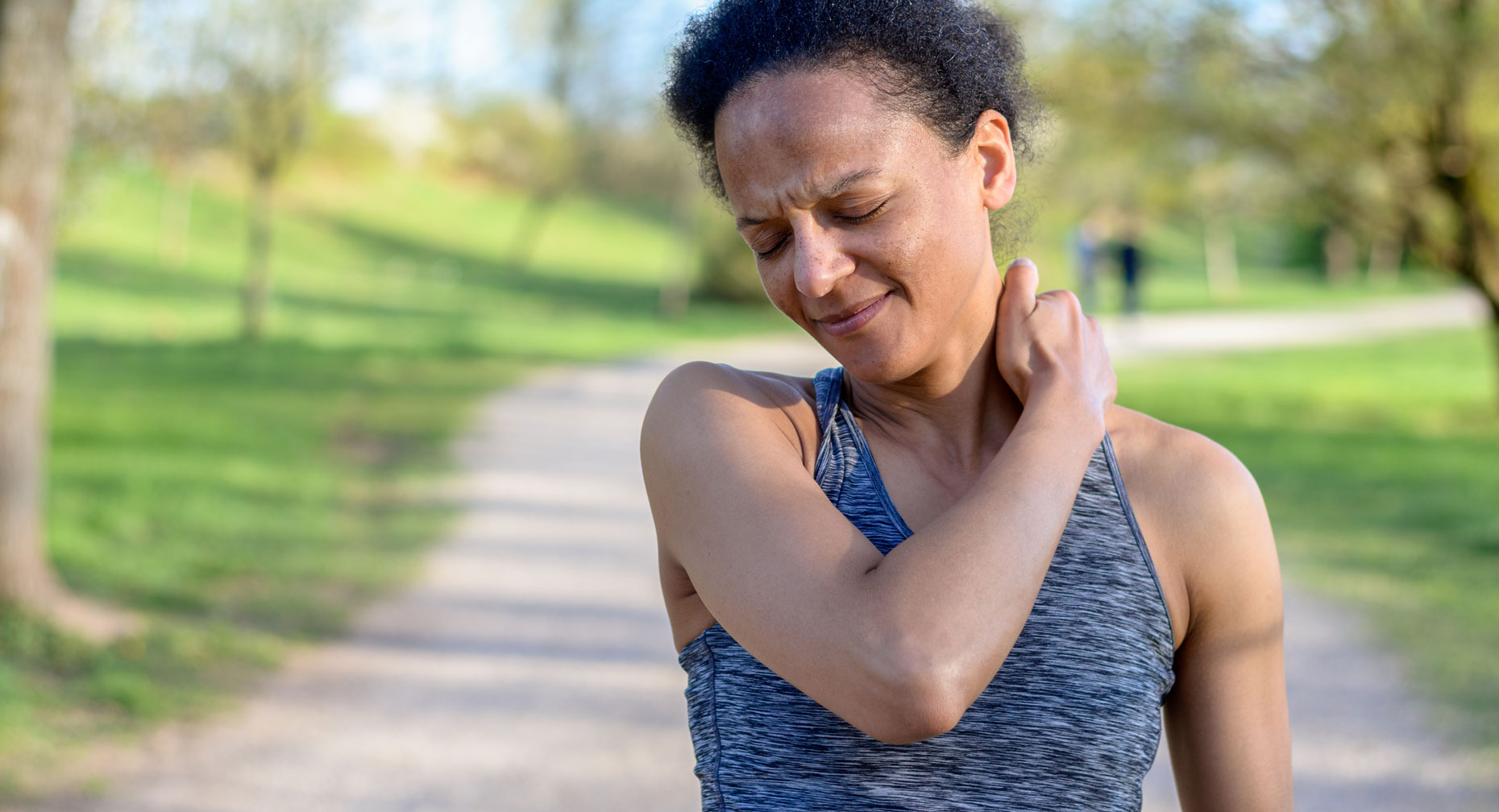
Find Your Perfect Match
Answer a few questions and we'll provide you with a list of primary care providers that best fit your needs.
Exercise can make you sore. That’s probably not news to you. Soreness after exercise is common, whether you work out regularly or not. A little soreness can give you the satisfying feeling of having done something that’s good for you.
It’s important, though, to recognize when you’ve overdone it – and when post-exercise soreness becomes a problem.
Delayed Onset Muscle Soreness
Doctors refer to the typical pain that can arise following exercise as “delayed onset muscle soreness.” Scott Albright, MD, Sports Medicine, Premier Orthopedics, explains: “It’s actually a very common problem. Athletes or anyone involved in physical activities can end up sore after any type of what we call ‘eccentric’ exercise, where you're lengthening a muscle and putting a force on that muscle. The strain can lead to delayed onset muscle soreness, which typically occurs about 24 to 48 hours after the physical activity and usually lasts around three to five days.”
Why does exercise make us sore? “We used to think it had to do with lactic acid buildup,” Dr. Albright says, “but now we believe it involves changes at the cellular level where the muscle experiences micro-tears. The soreness is a sign that the body is attempting to heal those tears.”
Who Is At Risk For Delayed Onset Muscle Soreness?
Anyone who engages in physical activity, particularly a new exercise or routine, could find themselves experiencing delayed onset muscle soreness, says Dr Albright. He adds that the only sure way to reduce the risk is to avoid working out. That’s a solution he doesn’t recommend.
Click play to watch the video or read video transcript.
But if your muscle soreness is not going away, or if you’re experiencing swelling of the muscles, pain in the joints, or your urine turns dark brown, your muscles may have broken down past the point of healing on their own. (See “rhabdomyolysis” below.)
“That’s when we advise that folks come in and let us take a look at them,” says Dr. Albright.
Post-workout soreness is one thing. But of far greater concern is when muscle tissue breaks down, as in the condition called rhabdomyolysis, which can have more damaging, dangerous effects.
How Is Delayed Onset Muscle Soreness Treated?
Your health care provider usually will recommend that you back off the exercise or new routine for a couple of days and manage symptoms with ice packs and an anti-inflammatory medicine, such as ibuprofen. If you return to exercise and the area is still sore, consider changing your routine to work a different set of muscles for a while.
Rhabdomyolysis
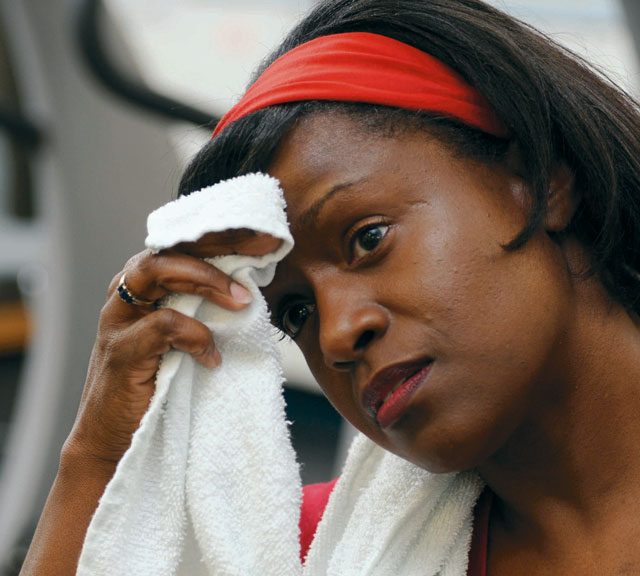
Post-workout soreness is one thing. But of far greater concern is when muscle tissue breaks down, as in the condition called rhabdomyolysis, which can have more damaging, dangerous effects.
Rhabdomyolysis can result from trauma to a large portion of muscle due to severe overexertion. If the trauma is significant enough, substances from the damaged muscle fibers can be released into the bloodstream. One of these substances, a protein called myoglobin, can be toxic to the kidneys. As a result, your kidneys could stop working correctly, causing a dangerous, and possibly fatal, condition.
Potential causes of rhabdomyolysis include:
- Trauma (as in an automobile accident), especially crush injuries
- Extended overexertion of the muscles
- Blockage of an artery or vein that leads to muscle death
- High-voltage electric shock
- Seizures, infection, heat stroke
- Alcohol abuse or use of certain illegal drugs
- Taking specific prescription drugs, such as statins
- Severe burns
- Certain genetic disorders
- Prolonged immobilization
Luke Polley, MSAT, ATC, CSCS, athletic trainer at the Sport and Human Performance Program at Miami Valley South Hospital, says the signs and symptoms of rhabdomyolysis can be hard to notice.
“They include muscle weakness, soreness and fatigue, which all are effects of working out in general,” he explains. “How can you tell if you are just experiencing normal workout fatigue and soreness or if those symptoms are something worse? You must try to be aware of some additional symptoms that may occur, including random bruising, swelling in the extremities, fever, nausea and dark-colored urine. If you experience any of these symptoms, you should go right to the emergency room just to be safe.”
The standard for diagnosing rhabdomyolysis is blood and urine testing. “If high levels of myoglobin are found in the blood and urine,” Polley says, “muscle damage has occurred.”
Are You At Risk oFr Rhabdomyolysis?
“Genetic and metabolic disorders can predispose you to rhabdomyolysis,” says Polley. “Disorders such as muscular dystrophy, conditions that cause poor metabolism of lipids, proteins or carbohydrates, and hypothyroidism can all increase the likelihood of developing the condition. There have even been cases where viral and bacterial infections were linked to causing rhabdomyolysis.”
Polley adds that endurance athletes such as marathon runners, CrossFit athletes and triathletes are the main population at risk for exertional rhabdomyolysis (that is, rhabdomyolysis caused by exertion rather than accident or other factors).
How Is Rhabdomyolysis Treated?
The primary treatment for rhabdomyolysis is rehydration — typically accomplished through IV fluids — to help prevent kidney failure. In severe cases, kidney dialysis may be required. Your doctor may also prescribe additional medicines.
Polley says if it’s caught and treated early enough, rhabdomyolysis should not cause long-term problems. “Some people get back to normal health within a few weeks,” he says.
“Some pain and weakness may occur for a while as the body slowly recovers. As long as the cause is dealt with (muscle injury, metabolic disorder, etc.) there should not be any other issues.”
Find Your Perfect Match
Answer a few questions and we'll provide you with a list of primary care providers that best fit your needs.
Source: Scott Albright, MD, Sports Medicine, Premier Orthopedics; Luke Polley, MSAT, ATC, CSCS, Miami Valley South Hospital; American Association of Neuromuscular & Electrodiagnostic Medicine; Medline Plus




